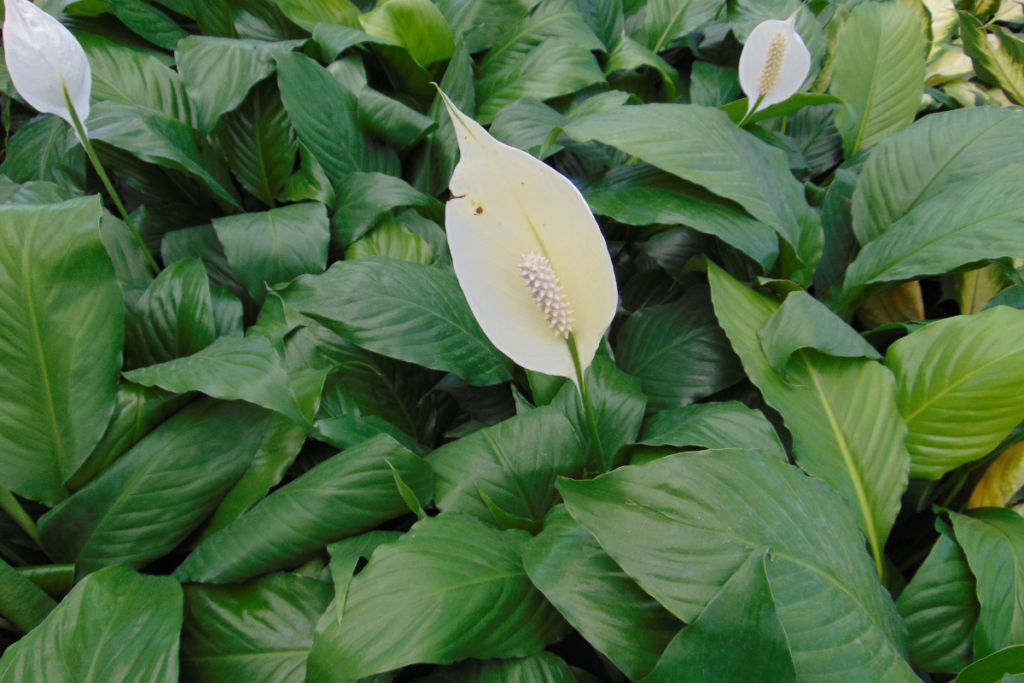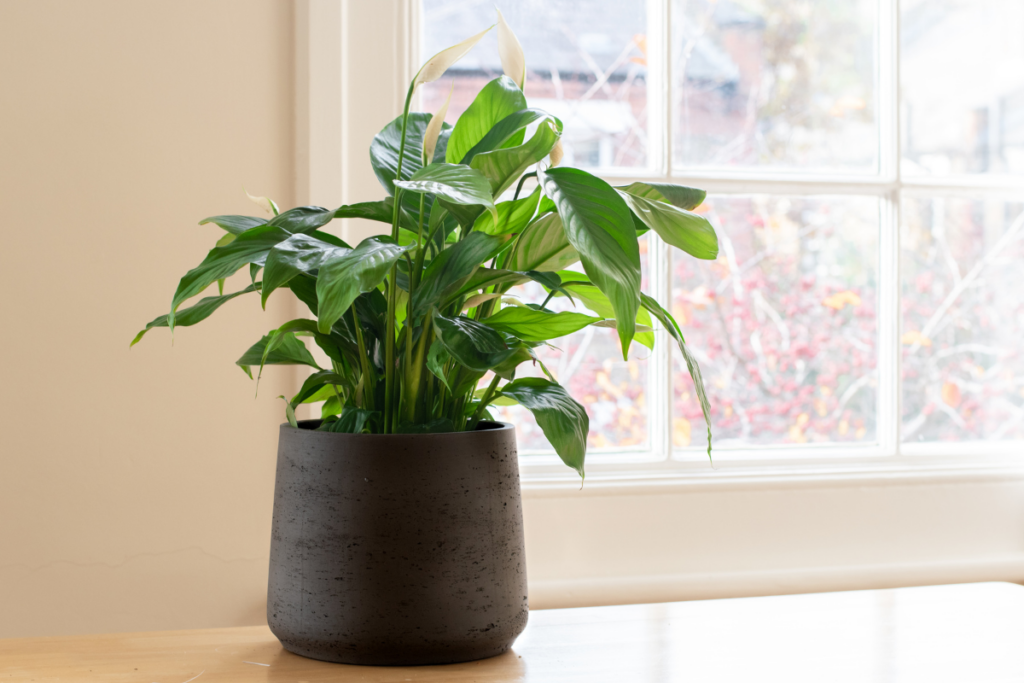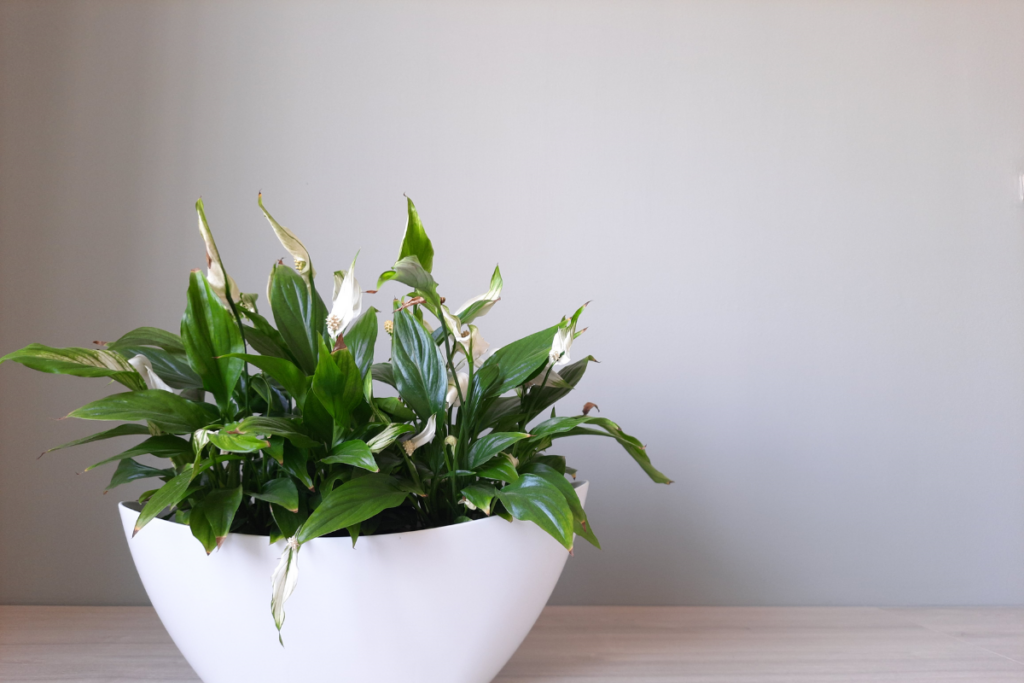Propagation is a great technique to extend your houseplant collection for nothing, especially if you have a Peace Lily that has reached maturity and is no longer growing taller or broader. You will learn all the details on how to properly propagate peace lily plants at home from this article.

The best method of propagation for peace lily plants is division. The cuttings from a mature plant may be cultivated in soil or water after being split. They may be repotted and grown to maturity after starting to effectively develop, which typically takes 4 to 12 weeks.
Uncertain about where to begin? No need to fear as we will cover all you need to know about peace lily propagation.
About Peace Lily Plants

Peace Lily plants belong to the genus Spathiphyllum. Since it belongs to the Araceae family, this genus is distantly related to plants like arrowheads and elephant ears.
While it is now widely grown as a houseplant, this species was once endemic to portions of Central and South America. Several types may also be found in Asia’s tropical regions.
Several kinds of peace lilies have somewhat different characteristics, but they all have dark green foliage that seems bushy because it emerges from the earth on separate stalks.
These plants typically grow to a maximum height of one to five feet and a corresponding maximum width. On their own stalks, peace lily flowers are white with a distinctive leafy look are produced. Peace lilies provide a wide range of extra advantages and a wealth of symbolic significance.
Its low light need makes it a common indoor houseplant for locations where other plants can’t thrive. But, it does need a lot of water and demands a greater humidity level than many households often provide.
Why Is It Important To Propagate Peace Lilies?
Propagating peace lily plants takes a bit more effort than that of some other houseplants. Nevertheless, if you want to have numerous plants (for free) to spread over the house rather than just a single example, it’s worth the effort. The greatest method to share your houseplants is also via propagation.
Some Factors To Consider Before Propagating Peace Lilies
Peace Lily is not difficult to grow, but it generally only responds to two distinct propagation techniques but it is simpler. It won’t take off if you try to grow it like a succulent or shrub—you’ll get nothing but failure. Make sure you’re utilizing root division or water propagation to grow new Peace Lily plants to minimize frustration and lost effort.
Difficulty Level
Compared to many other types of houseplants, Peace Lily plants are simpler to propagate. This is mostly because splitting a mature plant into new, smaller individuals is a flawless process.
As opposed to succulents and leaf cuttings, there is no need to wait a long time for growth. Before undertaking this method, you may require some basic gardening skills and to handle the plant carefully.
Growth Medium
Many houseplants may be propagated in both soil and water, or they prefer one over the other. However, for Peace Lily Plants, they react well to water propagation but only to a certain degree.
After division, they perform best when planted in brand-new, well-draining potting soil so roots may swiftly expand and recuperate. Even if roots are still connected to the stem, planting a cutting in water may produce a happy plant that only develops to a certain size. This cutting can’t be easily transplanted to soil later, but it may be kept in a vase at a lower size forever.
Plant Part To Propagate
Peace Lily leaf cuttings cannot grow roots. It’s uncommon to employ this technique with other plants, such as the Peace Lily and its relatives, but it’s frequent with succulent indoor plants.
Only large root segments and several plant stems with good foliage have the potential to root and develop into new plants. Even with rooting hormone, peace lily leaves that are torn off or even precisely trimmed for replication will never establish a healthy root system.
RELATED: How To Revive A Dying Peace Lily: Essential Tips and Tricks
Expected Development of Peace Lilies
Propagation techniques vary in their speed. Although Peace Lily plants are often exclusively reproduced by division, they take root quite rapidly.
Between one to three months of propagation, the young plants should show signs of fresh development. After splitting, they should fill out and develop more fully within six months.
The young peace lily plants should be fertilized two to three months after they are reproduced in order to promote healthy development without running the risk of damaging the roots while they are healing.
Although it will take time for the roots to spread out, if you start with very little pieces of Peace Lily, you may need to wait six months simply to see new growth.
Steps To Propagate Peace Lily

Several common techniques of propagation don’t work well for the Peace Lily plant. You cannot, for instance, take a cutting of the leaf or stem of a mature peace lily and submerge it in water. The only strategy that is effective for this houseplant is division. While it’s an easy technique to learn, it may be a bit messy.
It’s important to note that while handling Peace Lilies, gloves should be used since the plant contains substances called insoluble calcium oxalates that may irritate the skin.
Step 1. Prepare the Potting Soil
You need suitable soil for plants to develop healthily. The soil for Peace Lilies in pots should be light and very well-draining, like most soil for houseplants. When Peace Lilies grow in low light conditions, the soil evaporates much more slowly than when they are in a brighter location, and if the soil does not drain properly, the roots may end up sitting in water.
Since it is often excessively compacted and doesn’t drain well enough for containers, soil directly from the garden is not ideal for planting. Moreover, it may bring pests, illnesses, or weeds that lurk in the soil and affect the tender new development of your divisions. Even regular potting soil, which is often used for growing in outdoor containers, could not drain well enough for your interior plants.
The best approach to guarantee that your Peace Lily gets the ideal environment for development is to prepare your own soil mixture.
It is advisable to use a two parts potting soil, one part coconut coir, and one part perlite mixure. The addition of coir and perlite lightens the mixture and enhances drainage, reducing root rot. If you already have some on hand, peat moss may be used in lieu of coconut coir.
Step 2. Remove Your Peace Lily Plant
To get ready to propagate, set aside the soil mixture. The first step is to take the plant out of its current pot. Your selected plant should have enough roots on each area to support growth and be big enough to divide into many divisions, if not at least in half.
The optimal time to divide a plant is when it begins to require repotting, since this signifies that it has outgrown its present container and is prepared to be divided. These are five indicators that your peace lily needs to be repotted.
If it is in a plastic container, gently press the edges of the container to release the dirt. If the container is rigid, you may loosen the plant by running a clean knife down the edge. Avoid damaging the leaves by tipping it over and carefully pulling it away from the base.
The removal procedure will be much easier if you restrict watering a few days before you split. Moreover, it will make it easier for you to remove the extra dirt so you can see the roots more clearly. If a root ball is present, gently massage it to remove soil.
RELATED: Watering Peace Lilies: Proper Ways to Water Them and More
Step 3. Select The Plant Divisions
It’s time to choose where and how many pieces to divide the mother plant into. To examine each portion more closely, dig up a little of the dirt from around the roots and leaves.
You should be able to see areas where you can equally divide the plant without harming the stems, despite the fact that they don’t form recognizable clumps. There should be some foliage covering the roots in each segment.
To give the new divisions the greatest chance of surviving, it is advisable to divide a smaller plant in half. When splitting larger plants, be sure that each piece has adequate roots to support future development.
Step 4. Divide Your Plant
It’s time to divide up each component now that you’ve determined your divisions. Smaller plants should be simple to pull apart, particularly when just cut in half. The roots in the spaces between the divisions won’t be seriously harmed; they will regrow. Your Peace Lily should recover as long as the primary roots of each portion are unharmed.
Bigger plants with more divisions could need a more robust fix. You may free up each division by holding each portion and using a pair of sharp scissors or shears to cut the roots that connect them. To prevent the transmission of germs and other diseases to the young and delicate roots, make sure your shears are clean and disinfected.
While the roots will eventually regenerate, it’s crucial to minimize the harm. In their new pots, this will offer each new area the greatest possible start. Remove any damaged blooms or foliage from the sections while you’re at it to focus energy on developing new roots.
Step 5. Replant
For replanting, gather as many pots as you’ll need. The smaller parts need much less area for development, thus these new pots don’t need to be much larger than the original pot. The soil where the roots have not yet gotten to is at danger of becoming waterlogged if the container is too large for the plant.
Your prepared potting mix should be poured into the bottom third of the pots. You may need to fill smaller sections halfway. To gauge the necessary soil level and fill the pot to that point before planting, you may also hold your divisions within the container.
Put the division on top of this layer of dirt, and then carefully add extra potting soil to the area surrounding the roots. Make sure the plant’s base touches this line and fill the container slightly below the soil line. To keep the plant in place and eliminate any air pockets after the container is full, gently push down on the dirt around the base.
Peace Lily Propagation After-Care Tips

It is ideal to propagate this common houseplant in the spring and summer, when it is actively growing. Waiting until the autumn and winter dormant season will only lower your chances of success.
The greatest places for peace lily plants to grow are those that get a lot of bright, indirect sunshine throughout the day.
In particular following the shock of transplanting, new peace lilies need to be maintained at temperatures higher than 55 degrees Fahrenheit. Furthermore, keep them at or below 85 degrees F. During at least the first several days after propagating, maintain a high humidity level.
After the procedure, let the freshly propagated Peace Lily to dry out a bit in between watering cycles. Return to the regular watering cycle as soon as growth picks back up with vigor.
Until they are pushing against the edges of the pot or container, the young plants won’t need repotting or trimming. When the plant has been divided, this might take six months to a year or more.
After a few months, look out for signs of unhappiness in the Peace Lily, such as wilting, drooping, some yellowing of the leaves, and a lack of development. If employing that technique, change the water every week.
Also, you should keep a watch out for any common pests and illnesses that affect peace lily plants.
RELATED: How To Get More Peace Lily Flowers: Helpful Tips and Tricks
Frequently Asked Questions
How much time does a Peace Lily need to root in water?
Within weeks of being submerged in water, a rooted cutting should begin to grow new roots.
How much time does it take for Peace Lily plants to multiply?
It just takes a few weeks for Peace Lily plants to multiply in water. The growth of plants in soil might take many months.
Why won’t my Peace Lily root?
Damage to the roots, excessive watering, and poor soil mixture are typical causes of why your peace lily won’t root.
Are Peace Lily plants difficult to grow?
Plants for peace lilies may be easily multiplied, but patience is definitely needed.
Can a damaged leaf be used to establish a Peace Lily plant?
Attempting to grow from a single leaf won’t provide positive results for this houseplant.
Final Thoughts
You may produce more Peace Lily plants for free using these straightforward propagation techniques if you have a few minutes to spare and a beautiful Peace Lily plant. Use root division to multiply a single Peace Lily plant into many new ones. To develop plants you may give away or keep, place the separated plant in water or soil. Enjoy planting!
Those are our helpful tips on how to propagate peace lily. Also, check out our plant propagation articles:
How To Propagate Rubber Plant: Things To Know Beforehand
How To Propagate And Care For Prayer Plants | A Comprehensive Guide







